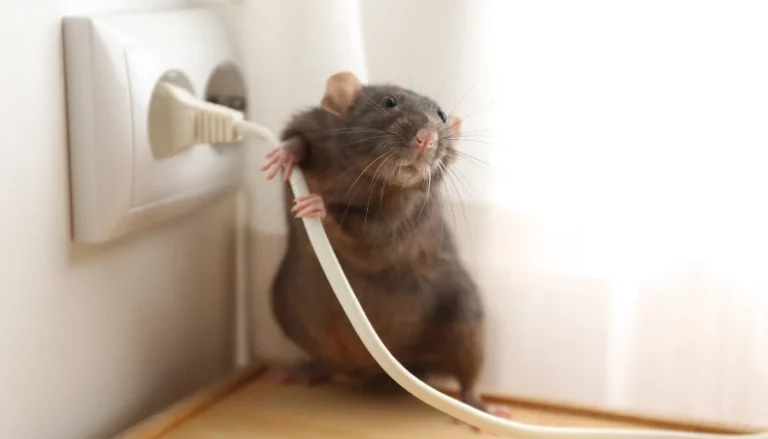We all take the appearance of everyday fruit and veggies for granted. Actually, we’re just so used to them looking the way they do now, that we have those images on stickers, turned into kitchen gadgets (which most of us don’t use but still need, for some reason) and even watch animated kid’s shows featuring dancing watermelons and bananas.
But did you know they haven’t always looked like they currently do?
Through selective breeding, humans have been molding fruits and vegetables to our liking, changing the way they look drastically over the years. And I can prove it!
Let’s countdown the most popular ten fruits and veggies that looked very different before we started cultivating them.
10. Corn
The evolution of corn is a great example of how we can significantly change a vegetable over time. Corn actually comes from a Mexican grass called teocinte. The barely edible teocinte is small, skinny, and it has very few kernels.

THEN
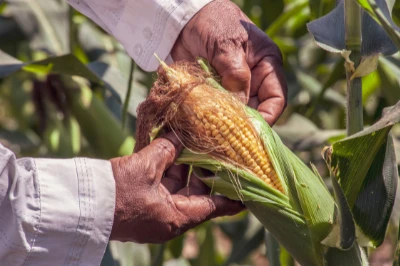
NOW
Back then, these kernels were also hard to reach since they were encased by a hard shell.
To peel it, you had to hit it with a hard object several times.
It’s also speculated that it had a very dry taste, like a raw potato. The link between corn and teosinte wasn’t very easy to find, actually.
For many years, nobody knew where corn came from, since it doesn’t look like anything that grows in the wild.
It was only after finding several similar chromosomes between the two that this link was determined. One scientist even managed to pop a teosinte kernel.
The cultivation of teosinte to modern-day corn came about as, for each subsequent harvest, we selectively bred the more desirable teosinte plants that had larger and more rows of kernels.
This led to corn we know today, which is easy to peel and a thousand times larger.
Modern corn also contains four times more sugar compared to the natural, old version of corn.
9. Avocado
The millennials’ favorite fruit has gone through quite a lot of change, and it’s all for the better.
In the wild, avocados are very small and can easily fit into the center of your palm, growing to about three inches in diameter.
The pit of the wild avocado takes almost all the space inside the fruit, leaving little room for the fruit’s famous green flesh.

THEN
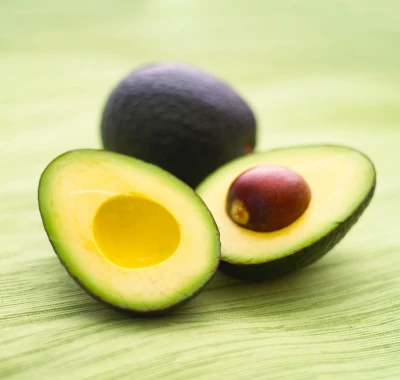
NOW
Roughly speaking, it would take close to ten wild avocados to get the same amount of flesh that you would get with a single modern version of the fruit.
Worse yet, the little flesh that it has doesn’t taste very good. It has a rougher, grittier quality in contrast to the creamy and tasty characteristic of the modern avocado.
The wild avocado was also encased in a hard shell, quite different from the leathery, fleshy kind of skin that the current avocado has.
Thankfully, our ancestors improved the fruit in significant ways, selectively breeding it, allowing us to have this tasty fruit that goes so well on toast.
8. Peach

THEN (ENLARGED)
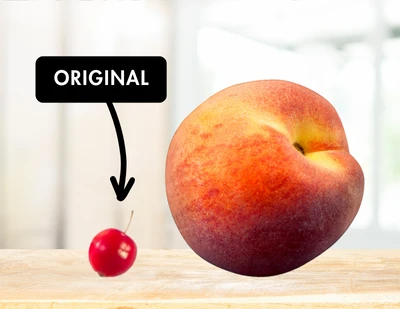
NOW (SIZE COMPARISON)
The peach is another example of our ancestors using selective breeding to create a bigger and tastier version of a fruit.
Domesticated by the Chinese around 4000 B.C., the original peach was very small and resembled a cherry.
It had a waxy skin and only 64% of edible flesh. It also had a taste that was described as earthy, sweet, sour and slightly salty, similar to a lentil.
Also, a significant amount of the wild peach was occupied by the fruit’s stone, close to 34%.
After thousands of years, farmers got to the version of the peach we have today.
The current modern peach has soft, edible skin and is 64 times larger. It also has 90 percent of edible flesh, a vast increase from the wild peach.
The stone in the current peach has also dramatically decreased in size, making up for only 10% of the fruit.
The current peach is also 27% juicier and tastes 4% sweeter.
All around, the peach has just gotten better through the ages.
7. Eggplant
The wild variation of the eggplant is completely unrecognizable from the modern version we have today.
Eggplants used to come in a variety of shapes, but most of them were round.
In fact, the name eggplant actually comes from the fact that they were often white and round, hence looking like an egg that grows from a plant.
They had a range of different colors like yellow, white and even blue. Some of the earliest versions of the eggplant also had spines that connected to its flower.
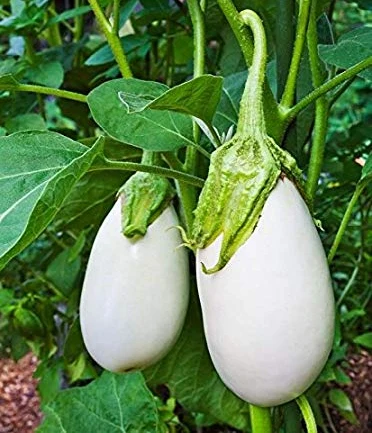
THEN
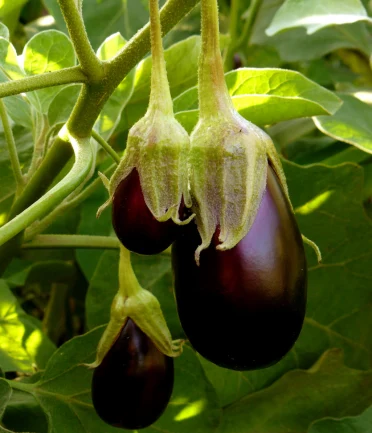
NOW
It’s believed that the domestication of the eggplant started in places like China, India, and Thailand.
They were initially used only for medicinal reasons because the wild eggplant had a bitter aftertaste.
Through selective breeding we arrived at the modern eggplant with its purple color and oblong shape.
The spine has disappeared, giving way to its stem that connects to its flower. Better yet, the eggplant is now edible and really delicious.
6. Strawberry
Oftentimes, humans molded fruits and vegetables to make them taste better. But, the opposite happened in the case of the wild strawberry.
Known as Frageria vesca, the wild strawberry actually tasted sweeter, with a true concentrated flavor, and is considered the far superior version of the fruit.
However, the wild strawberry is much smaller than its modern version.

THEN
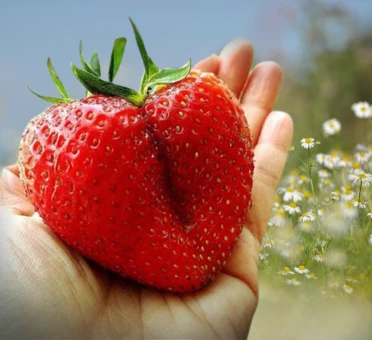
NOW
So why did the modern version of the strawberry lose its flavor?
Reportedly, that’s because other factors started coming into play influencing how these fruits evolved.
Farmers started favoring size, resistance to disease, and a better and bigger appearance, which ended up decreasing the taste of the fruit.
The modern strawberry actually started to take shape when a French spy brought the Chilean version of the strawberry over to France.
This variation of the fruit was significantly bigger than the ones grown in Europe at the time. The two species of strawberry were crossed and gave rise to the modern strawberry of today.
Fun fact, what may look like seeds in the wild strawberry are actually called achenes. They are themselves tiny fruits with tiny seeds inside of them.
5. Tomato
We have been shaping the tomato to our own taste for thousands of years. The evolution of the tomatoes happened in two stages.
First, there was the wild ancestor of the tomatoes. These fruits had a size similar to berries and came in a bunch of different colors like yellow, green and purple.
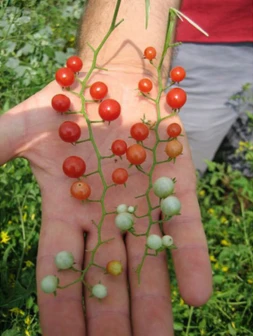
THEN
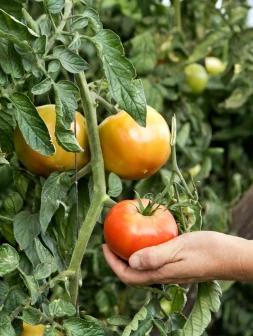
NOW
According to historical experts, the first cultivated tomatoes were small and yellow, which earned them the name golden apple.
These wild tomatoes, after a large span of time, eventually evolved into the cherry tomato.
From the cherry tomato, humans ultimately developed the big-fruited red tomato, which is the fruit’s most recognizable form.
However, these changes weren’t all for the best. Over the years, the tomato lost some of its genes that create sugar, making it less flavorful.
Because of all the selective breeding the tomato has been through, most consider that there is little room to improve on the fruit’s genetic traits, so it’s probable that the tomato will stay largely the same for the near future.
4. Carrot

THEN
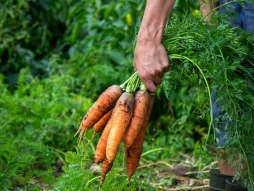
NOW
Wild carrots look nothing like the orange carrots we know today.
They were found in Persia around the tenth century and were either white or purple. These carrots were very thin with forked roots and a strong, powerful flavor.
The seeds of these types of carrots eventually made its way to Europe, where they were selectively bred over centuries in order to reduce their bitterness and increase their sweetness and size.
These improved carrots still came in a variety of different colors like red, yellow and purple. The bright orange version of the modern carrot only came about for political reasons.
Back in the 17th century, the Dutch were known mainly as carrot farmers, and it was there that the orange variation started to be cultivated.
The Dutch started growing this variation in abundance because they saw it as a tribute to William of Orange, who led The Netherlands to independence.
From there, the color stuck and became the primary version of the carrot we all know.
3. Cucumber
You probably wouldn’t guess that the wild cucumber is actually related to the modern version of the cucumber we have nowadays. The wild cucumber has a distinct look and is very easy to spot.
It has an oval or spherical shape and is covered in spikes.
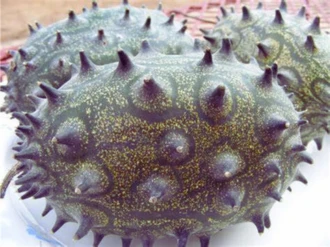
THEN

NOW
These spikes usually grow to at least one point two inches in diameter, but can go up to eight inches long. These wild cucumbers usually hold four seeds inside of them.
Although related to the cucumbers we’re used to, this prickly version of the vegetable is not edible and is considered toxic. Some reports say that ingesting them could even kill you.
The cucumber is believed to be native to India.
It was cultivated originally for medicinal reasons. The modern cucumber bears little resemblance to its wild version. It has a cylindrical shape with multiple seeds inside of it, and it can grow as large as 24 inches long.
Modern cucumbers are also very edible and low in calories, given that they are almost 90% water.
2. Banana
The wild banana is quite different from the yellow snack that we have today.
Originally, they were stalky and hard, filled with large and tough seeds that were spread across the fruit’s interior.
Because of the hard seeds, these bananas were inedible. That’s why most assume that these wild fruits were cooked and then eaten.
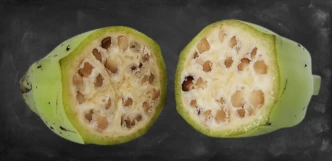
THEN
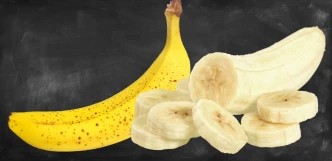
NOW
Otherwise, humans would not have started cultivating it. It’s believed that the first bananas were formed 10,000 years ago in the region that is now Papua, New Guinea.
The bananas we have today are a hybrid of two wild banana varieties, Musa acuminata and Musa balbisiana, which eventually developed into the well known bright yellow fruit with its peelable cover.
The current banana has smaller seeds, more nutrients and tastes better than its wild counterpart. However, it’s said that the fruit needs to evolve, or they might go extinct.
That’s because right now, these bananas lack genetic diversity. This makes the fruit increasingly vulnerable to pests and diseases that could devastate the banana industry. Hopefully scientists will manage to find a viable alternative before it comes to that.
1. Watermelon
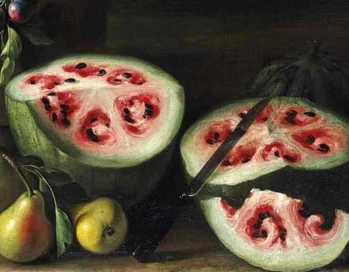
THEN

NOW
Watermelons have actually been around for millennia, and they’re one of the fruits that have most drastically changed in appearance over the years.
The first recorded harvest of the fruit happened 5000 years ago in Egypt. Those watermelons were unrecognizable by today’s standard.
They were a fraction of the size they are now, measuring around two inches in diameter.
They were also extremely bitter, tasting nothing like the sweet fruit we have today. Over time, humans kept cultivating and molding the watermelon.
By the 17th century the watermelon, from the outside, largely resembled the ones of today.
However, the inside part of the fruit would probably be considered bizarre by people today.
Paintings from the era show a sliced open watermelon having swirly shapes inside with six triangular pieces and a spiral of seeds.
The watermelon’s flesh was also a lighter red. Over time, we got to the modern, fleshier version of the watermelon. The fruit is now over 1500 times bigger than the original wild watermelon.
It’s fleshy interior also increased in size and became a more vibrant red over time.
All our human effort made the watermelon bigger, juicier and taste sweeter.
What fruit or vegetable do you think changed the most?
After this list, will you be able to look at them all the same?








